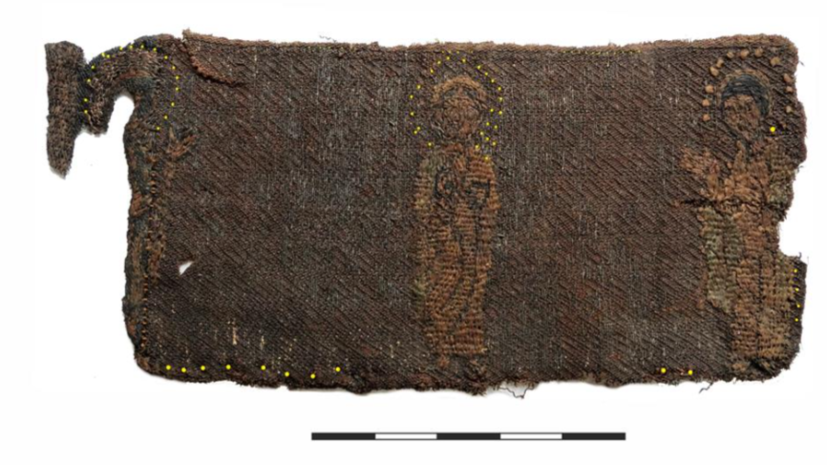Scientists from the Institute of Archeology of the Russian Academy of Sciences presented the results of a study of embroidery of the pre-Mongolian period, which was previously found during excavations of a necropolis near the village of Chaadaevo 5 (Vladimir region).
Details were reported in the press service of the Institute.
Recall that this medieval settlement was discovered in 2020.
At the excavation site, scientists have collected a large collection of artifacts that indicate that representatives of the ancient Russian nobility lived here.
Not far from the settlement there was a necropolis, where 46 graves were found.
Necropolis near the village of Chaadaevo 5
© Institute of Archeology RAS
Among other finds, special attention of archaeologists was attracted by a fragment of textiles in the grave of a woman aged 16-25 years.
The burial had previously been damaged during plowing, so it was not easy to determine what exactly was a piece of cloth.
Scientists handed over the artifact to the laboratory for cleaning from soil and restoration.
It turned out that an iconic image was embroidered on the fabric.
In the center is the figure of Jesus Christ, on the sides are the Mother of God and John the Baptist facing him.
The height of the figures is 5 cm.
Researchers believe that the fragment of embroidery was part of a headdress or an ochelye (hairband worn on the forehead).
The length of the found strip of textile is about 12 cm, the width is 5.5 cm. The product was sewn from two types of fabric: dark silk and gold-woven ribbon with a braided ornament.
The embroidery was fixed on birch bark and lining, which has not been preserved.
Fragment of textiles before restoration
© Institute of Archeology RAS
“Judging by the archaeological finds, the tradition of depicting saints on headdresses existed in pre-Mongolian Rus'.
In the early stages of Christianity, religious subjects could well be present in everyday life and, probably, demonstrated belonging to Orthodoxy.
There is no doubt that rich gold embroidery (skillful embroidery with metal threads.
-
RT
) testifies to the high well-being of the buried, ”said Olga Zelentsova, head of the Volga expedition of the IA RAS.
According to scientists, such a unique embroidery requires further study.
The closest analogue of the found fragment of textile (both in the image and in the execution of embroidery) is the handrails of the Monk Varlaam Khutynsky, dating back to the 12th century and stored in the Novgorod State Museum-Reserve.
As Irina Elkina, a specialist in work with archaeological textiles, a researcher at the Department of Archeology of Moscow Rus' of the IA RAS, explained, embroidery on a gold-woven ribbon requires more skills and experience than just embroidery on fabric.
“It should be noted the highest level of craftsmanship, jewelry subtlety and elegance of this miniature embroidery.
Figures less than a little finger high are embroidered with the smallest millimeter stitches, and the craftswoman used silk threads of various colors and gold threads.
To emphasize the lines of drapery of clothes, the inclination of heads, and the images of faces, a variety of sewing techniques were used: on the floor, “head on”, “split” in shape, and a stalk seam.
Now the colors of the threads are not visible, but we can imagine what this embroidery looked like - there were bright multi-colored figures on a sparkling gold background, ”said Elkina.

